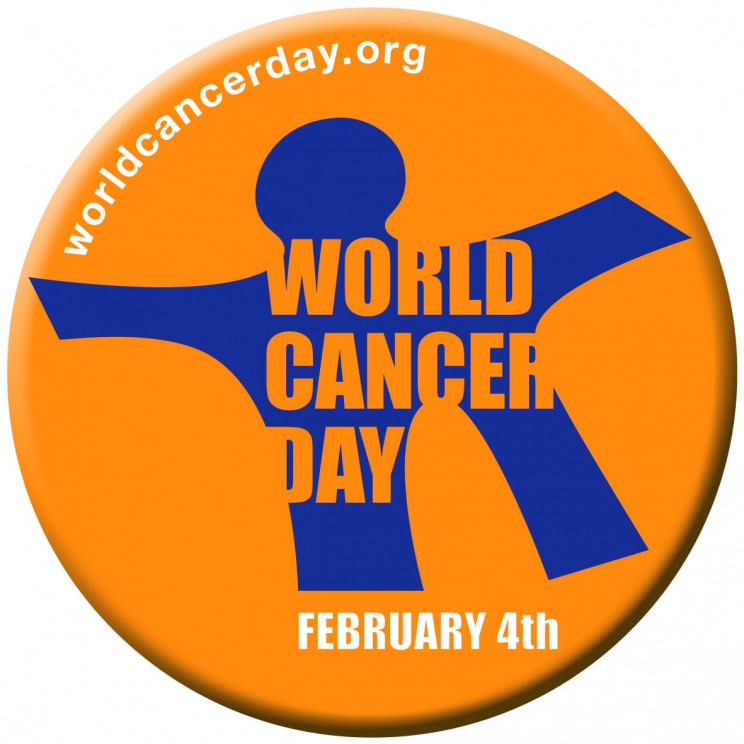new posts in all blogs
Viewing: Blog Posts Tagged with: diagnosis, Most Recent at Top [Help]
Results 1 - 6 of 6
How to use this Page
You are viewing the most recent posts tagged with the words: diagnosis in the JacketFlap blog reader. What is a tag? Think of a tag as a keyword or category label. Tags can both help you find posts on JacketFlap.com as well as provide an easy way for you to "remember" and classify posts for later recall. Try adding a tag yourself by clicking "Add a tag" below a post's header. Scroll down through the list of Recent Posts in the left column and click on a post title that sounds interesting. You can view all posts from a specific blog by clicking the Blog name in the right column, or you can click a 'More Posts from this Blog' link in any individual post.

By: Joe Couling,
on 8/28/2015
Blog:
OUPblog
(
Login to Add to MyJacketFlap)
JacketFlap tags:
dengue fever,
foreign diseases,
travel medicine,
diagnosis,
virus,
rabies,
Infographics,
malaria,
infection,
bacteria,
yellow fever,
infographic,
*Featured,
Health & Medicine,
typhoid,
meningitis,
Online products,
Oxford Medicine Online,
Infectious Diseases,
oxmed,
Joe Couling,
Add a tag
This summer intrepid travelers everywhere are strapping on backpacks, dousing themselves in mosquito spray, and getting their inoculations -- ready to embark on journeys that will take them into contact with some of the most virulent viruses and nastiest bacteria on the planet. Even those of us who aren’t going off the beaten track may end up in close quarters with microbes we’d rather not befriend. Explore some of the most common infectious diseases around the globe and how to identify them in this infographic.
The post Common infectious diseases contracted by travellers worldwide [infographic] appeared first on OUPblog.

By: Nicola,
on 2/4/2012
Blog:
OUPblog
(
Login to Add to MyJacketFlap)
JacketFlap tags:
diagnosis,
cervical,
cure,
vaccine,
mutation,
lauren pecorino,
why millions survive cancer,
tumour,
cancer cell,
metastasis,
prognosis,
world cancer day,
therapeutics,
cancers,
health,
cancer,
q&a,
Medical Mondays,
biology,
cancer research,
Add a tag
On World Cancer Day 2012, we speak with Dr Lauren Pecorino, author of Why Millions Survive Cancer: the Successes of Science, to learn the latest in the field of cancer research. – Nicola

There are so many myths about cancer that it is sometimes difficult to understand exactly what it is. Can you briefly explain how cancer develops?
Cancer is a disease of the human genome. Many agents that cause cancer cause permanent changes to your genes. These permanent changes are called mutations. Cancer is usually caused by the accumulation of mutations over time. This is why cancer risk increases with age. The altered genes may produce faulty proteins that lead to abnormal cell growth and this appears as a tumour. Cancer is characterized by abnormal cell growth and the ability of tumour cells to spread throughout the body. It is this second characteristic, called metastasis that is the most difficult aspect to treat.
It is said that cancer now affects one in three people over a lifetime. What’s the latest progress in the field of cancer research?
There has been tremendous progress in the field of cancer management. The good news is that trends in death rates are decreasing for many cancers though that is not to say for all cancers. There are millions of cancer survivors who have had their diagnosis ten or more years ago. Many people are now living with cancer. Conventional treatments such as surgical procedures have been refined and new drugs that target tumour-specific molecules have proved efficient and promises less side effects.
In addition, we are learning to make lifestyle choices that science has shown reduces cancer risk — the most obvious being not smoking. We also have cancer screening programmes that can catch cancer early and even prevent cancer by treating pre-cancerous growths. The latest means for preventing a specific type of cancer is a cancer vaccine. Interestingly the vaccine designed to prevent cervical cancer vaccine also prevents several other cancers caused by the human papilloma virus such as some head and neck cancers.
What do you see as the priorities for future cancer research? Where will the next great advances be?
I see four main priorites for future cancer research.
1 – To develop better and less invasive diagnostics so that we can detect cancer earlier. It is well-known that catching cancer earlier gives a better outcome or prognosis.
2 – To expand our understanding of the individual molecular differences between tumors and to be able to fully practice personalized medicine which allows a better match between a patient and a drug. This understanding will need to be supported by technology that allows a patient’s tumour DNA to be sequenced (similar to the methods used for the Human Genome Project).
3 – To understand if we can turn a cancer cell back into a normal cell. This may sound strange but lessons from stem cells and cloning tell us that changing one cell type into another is possible.
4 – To better understand metastasis and how we can better treat it. The spreading of cancer cells throughout the body is the most difficult aspect of treating

By: Lauren,
on 9/6/2011
Blog:
OUPblog
(
Login to Add to MyJacketFlap)
JacketFlap tags:
diagnosis,
us open,
venus,
symptoms,
venus williams,
complications,
Editor's Picks,
*Featured,
syndrome,
Health & Medicine,
daniel j. wallace,
Sjögren’s,
Sjögren’s Syndrome Foundation,
steven taylor,
The Sjogren's Book,
sjogrens,
Add a tag
By Steven Taylor
CEO - Sjögren’s Syndrome Foundation
The Sjögren's Syndrome Foundation (SSF) was saddened to hear about U.S. tennis star Venus Williams’ diagnosis of Sjögren’s syndrome and supports her courageous decision to step forward and share her diagnosis with the public.
On behalf of the 4 million Americans with Sjögren’s

By: Maud Newton,
on 7/13/2011
Blog:
Maud Newton
(
Login to Add to MyJacketFlap)
JacketFlap tags:
Personal,
Culture,
depression,
therapy,
ocd,
shrinks,
diagnosis,
lori gottlieb,
Joan Didion,
Neuroses,
dissociation,
Add a tag
In her forthcoming memoir, Blue Nights, Joan Didion remembers the way her daughter’s (above, left) psychiatric diagnosis kept changing. Manic depression became OCD; OCD became something else, something she can’t remember now, but something that ultimately gave way to many other conditions before “the least programmatic of her doctors settled on one that actually seemed to apply”: borderline personality disorder.
Diagnosis never seems to lead to a cure, Didion observes, only an enforced debility. But as with a psychiatric evaluation of herself conducted in 1968 and excerpted in The White Album (and quoted in part below), Didion sees and reflects on the truths of the assessment even as she ponders it at arm’s length.
I’ll have much more to say about her new book when it’s out in November, but this paradoxical blend of skepticism, acceptance, and astringent detachment in matters pertaining to psychology and its insights and connection to the culture, has always characterized Didion’s writing. It’s one of the reasons I’m so drawn to her work.
In the title essay of The White Album, the one that begins with the famous line “We tell ourselves stories in order the live,” she recalls “a time when I began to doubt the premises of all the stories I had ever told myself, a common condition, but one I found troubling.” She continues:
I was supposed to have a script, and had mislaid it. I was supposed to hear cues, and no longer did. I was meant to know the plot but all I knew was what I saw: flash pictures in variable sequence, images with no “meaning” beyond their temporary arrangement, not a movie but a cutting-room experience. In what would probably be the mid-point of my life I wanted still to believe in narrative and in the narrative’s intelligibility, but to know that one could change the sense with every cut was to begin to perceive the experience as rather more electrical than ethical…
Another flash cut:
In June of this year patient experienced an attack of vertigo, nausea, and a feeling that she was going to pass out… The Rorschach record is interpreted as describing a personality in process of deterioration with abundant signs of failing defenses and increasing inability of the ego to mediate the world of reality and to cope with normal stress… Emotionally, patient has alienated herself almost entirely from the world of other human beings. Her fantasy life appears to have been virtually completely preempted by primitive, regressive libidinal preoccupations many of which are distorted and bizarre… In a technical sense basic affective controls appear to be intact but it is equally clear that they are insecurely and tenuously maintained for the present by a variety of defense mechanisms including intellectualization, obsessive-compulsive devices, projection, reaction-formation, and somatization, all of which now seem inadequate to their task of controlling or containing an underlying psyhotic process and are therefore in process of failure. The content of patient’s responses is highly unconventional and frequently bizarre, filled with sexual and anatomical preoccupations, and basic reality contact is obviously and seriously impaired at times. In quality and level of sophistical patients responses are characteristic of those of individuals of high average or superior intelligence but she is now functioning intellectually in impaired fashion at barely average level. Patient’s th

By: Rebecca,
on 4/14/2008
Blog:
OUPblog
(
Login to Add to MyJacketFlap)
JacketFlap tags:
A-Featured,
depression,
mood,
bipolar,
disorder,
psychiatry,
manic,
moods,
diagnosis,
psychotropic,
anthropologist,
Add a tag

Today we are excited to bring you Emily Martin a professor of anthropology at New York University. In her most recent book, Bipolar Expeditions: Mania and Depression in American Culture, (published by Princeton University Press), Martin guides us into the fascinating and sometimes disturbing worlds of mental-health support groups, mood charts, psychiatric rounds, the pharmaceutical industry, and psychotropic drugs. Charting how these worlds intersect with the wider popular culture, she reveals how people living with bipolar disorder are often denied the status of being fully human, even while contemporary America exhibits a powerful affinity for manic behavior. In the post below Martin look at how this is affecting American’s perception of mood disorders. Thanks to our friends at PUP for letting us know about this fascinating book!
What lies behind the recent explosion in the diagnosis of bipolar disorder among American children? There is much to wonder about, as we know from Time magazine’s 2002 cover, “Young and Bipolar;” and from a recent 60 Minutes segment, “What killed Rebecca Riley?” Four year old Rebecca is said to have died from an overdose of psychiatric medications given to her for her bipolar disorder. The New York Times had already reported the month before that the number of American children and adolescents treated for bipolar disorder increased 40-fold from 1994 to 2003. Not long afterward, under the headline “Your Child’s Disorder May be Yours, Too,” The Times reported that parents are struggling with whether to acknowledge aspects of their own behavior that are consistent with mood disorders in order to help their children feel they have “fellow travelers.” Behind these stories lie powerful cultural changes in how Americans regard their moods.
 Bipolar disorder is becoming not only a disability but also an asset. Because of the creativity of their manic states, larger than life figures like Robin Williams and Ted Turner are frequently described as “bipolar.” Depression, at the other end of the mood spectrum carries a different load of associations. If mania comes to signal success in the competitive, sped-up global economy, depression signals the opposite: the failure to be productive. What interests me as an anthropologist is that cultural values very specific to our society are carried along with the diagnosis of a mood disorder.
Bipolar disorder is becoming not only a disability but also an asset. Because of the creativity of their manic states, larger than life figures like Robin Williams and Ted Turner are frequently described as “bipolar.” Depression, at the other end of the mood spectrum carries a different load of associations. If mania comes to signal success in the competitive, sped-up global economy, depression signals the opposite: the failure to be productive. What interests me as an anthropologist is that cultural values very specific to our society are carried along with the diagnosis of a mood disorder.
For bipolar disorder, the our cultural fantasy is that as depression can be made to wither away altogether, the high energy of the manic phase can be tamed or optimized, so that individuals can succeed and economies grow. The growing numbers of psychopharmaceutical drugs are what allow contemporary doctors to give a patient a diagnosis of mood disorder and treat it, rather than (as in earlier historical periods) lay the patient’s problems at the feet of his or her temperament or character. At a meeting of the American Psychiatric Association, I met a young doctor who practiced in a well-known hospital near Hollywood. When he heard about my research, he became quite interested and offered me this experience.
Where I work, we get a lot of Hollywood comedians coming in. They are manic depressives. There are two important things about this: first, they do not want their condition publicized, and second, their managers always get involved in the details of their treatment. The managers want the mania treated just so. They do not want it floridly out of control, but they also absolutely do not want it damped down too much.
He felt he was being called upon to optimize his patients’ moods (for the theatrical profession and for the particular kinds of creativity it requires) through proper management of their drugs. Listening as an anthropologist, I began to feel uneasy about the prospect of extending the optimization of psychotropic drugs to suit other kinds of employment and people in other age groups. What would happen if optimizing states of mind were extended, as the DOD hopes, to soldiers on combat duty? What are the implications of extending the use of powerful psychotropic drugs to treat children whose behavior causes problems at home or school? A number of factors have been blamed for the rising statistics of bipolar disorder in children: improved treatments or more knowledgeable diagnosis by doctors. But the need for treatment (real as the need may be and helpful as the treatment may be in some cases) cannot be separated from values in our cultural environment that associate some moods with success and others with failure. A broader conversation about the cultural environment in which rates of bipolar disorder are rising would enrich our understanding of what it means to be bipolar – for children and adults alike –today.
ShareThis
I blogged about my initial thoughts and analysis of the Saipan Casino Act here.
I've heard many other concerns since I wrote that article: concerns about unregulated greed and potential dishonesty; organizational, administrative, and technological incompetence; and unintended, harmful consequences on local businesses.
I share all of those concerns.
But one of my biggest and newest concerns deals with the effect on the traditional mwarmwar. I mean, what if we end up with headgear like this?









You know, the larger hats are on wheeled apparatuses (apparati?) so that Snow White doesn't have to bear all that weight on her neck.
(-:
Long Live Beach Blanket Babylon!
Oh, I figured no one could actually wear a hat like that without help!
And thanks for the Beach Blanket Babylon reference. I forgot to give credit to you for leading me there and to them for such a hat-tastic image.
I loved going to see Beach Blanket Babylon in San Francisco! That's their hat, isn't it?
There is a metal truss rod connected to an undergarment that distributes the weight of that monstrous hat, btw. There weren't any visible wheels when I saw the shows, but with that skirt, one never knows...